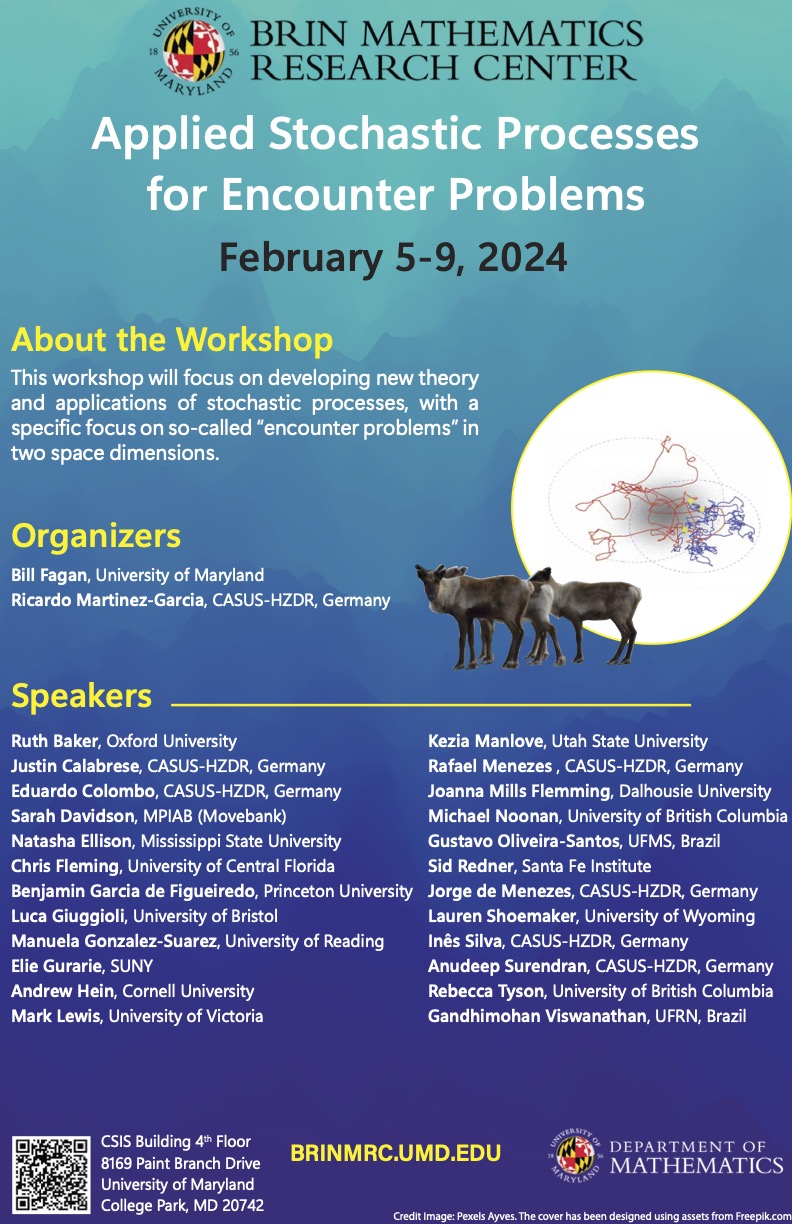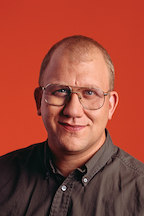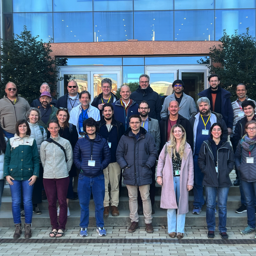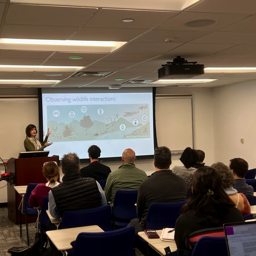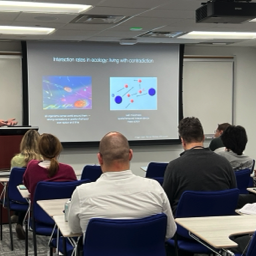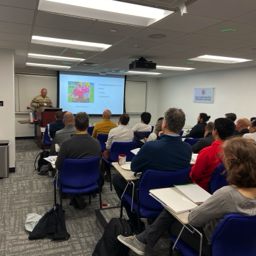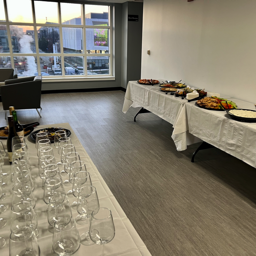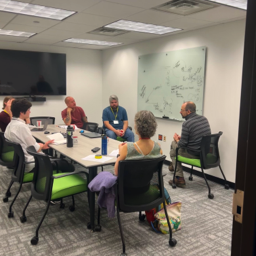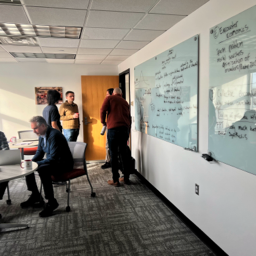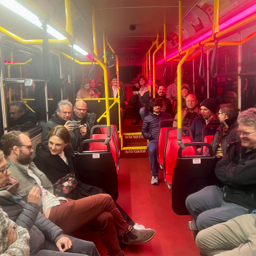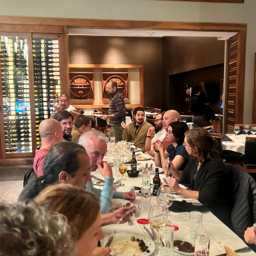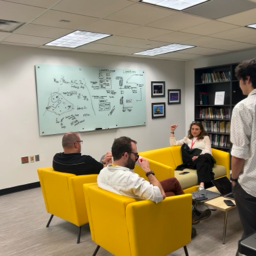Applied Stochastic Processes for Encounter Problems
February 5, 2024 - February 9, 2024
Organizers:
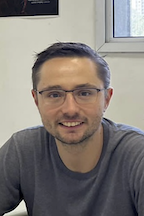
Ricardo Martinez-Garcia
Center for Advanced Systems Understanding (CASUS / HZDR), Görlitz, Germany
This workshop will focus on developing new theory for and applications of stochastic processes, with a specific focus on so-called ‘encounter problems’ in two space dimensions. Encounter problems include, among other topics, the calculation of first passage times and assessments of spatial aggregation and clustering from the underlying behavior of stochastic processes. Such approaches are central to efforts seeking to scale microscopic (particle-level) representations to macroscopic (population-level) descriptions. Encounter problems for simple Brownian Motion (BM) are reasonably well understood mathematically and lead to the well-known law of mass action when scaled to the population level. However, encounter problems for more complicated stochastic processes, such as Ornstein-Uhlenbeck (OU) motion, are a persistent hot topic, and how OU encounters reflect in population dynamics remains unknown. In particular, understanding encounter problems for OU motion (particularly in a two-dimensional spatial context) is of substantial interest in mathematical biology. For example, encounter problems are central to understanding and building mathematical representations of disease spread where the focus is on contacts between infected and susceptible individuals, one or both of which can be mobile. Likewise, encounter problems for OU motion are highly relevant in ecology where the focus is on animals that occupy home ranges. Results from theoretical analyses of encounter problems have proven helpful in predicting the specific regions of space in which encounters between animal groups are expected to occur. Similarly, strong connections exist in cell biology, where concerns about ‘crowded transport’ problems regarding the intracellular movement of macromolecules have been explored with OU models. With this workshop, we expect to make progress in formulating and exploring ‘encounter’ problems for OU models and their relatives. By bringing together leading experts, we hope to make progress in at least two areas. First, we would like to explore encounter problems for OU movement processes that include realistic, biologically motivated attraction/avoidance forces. This is challenging because inclusion of such forces can result in nonlinear stochastic differential equations. Second, we would like to incorporate OU movement into epidemiological and population dynamic models. This is challenging because individuals are not indistinguishable under OU-movement assumptions, and obtaining population-level statistics requires tracking the population size and at least some features of its spatial structure over time.
Speakers:
- Ruth Baker, Oxford University, UK
- Justin Calabrese, Center for Advanced System Understanding, Görlitz, Germany
- Eduardo Colombo, Center for Advanced System Understanding, Görlitz, Germany
- Sarah Davidson, Movebank.org
- Natasha Ellison, Mississippi State University
- Chris Fleming, University of Central Florida
- Joanna Mills Flemming, Dalhousie University, Canada
- Luca Giuggioli, University of Bristol, UK
- Manuela Gonzalez-Suarez, University of Reading, UK
- Elie Gurarie, SUNY College of Environmental Science and Forestry, Syracuse
- Andrew Hein, Cornell University
- Mark Lewis, University of Victoria, Canada
- Kezia Manlove, Utah State University
- Rafael Menezes, Center for Advanced System Understanding, Görlitz, Germany
- Michael Noonan, University of British Columbia, Canada
- Gustavo Oliveira-Santos, Federal University of Mato Grosso do Sul, Brazil
- Sid Redner, Santa Fe Institute
- Lauren Shoemaker, University of Wyoming
- Ines Silva, Center for Advanced System Understanding, Görlitz, Germany
- Anudeep Surendran, Center for Advanced System Understanding, Görlitz, Germany
- Rebecca Tyson, University of British Columbia - Okanagan, Canada
- Gandhimohan Viswanathan, Federal University of Rio Grande do Norte, Brazil
Poster:
